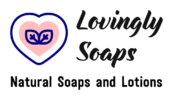How do you make soap? It seems like a daunting process, but in reality it isn’t. Soap happens when oils mix with a mixture of lye or Sodium Hydroxide and distilled water. The oils must be fully melted and between a temperature of 115 and 125 and the lye water must be within about 10 degrees of the oils. The process that happens between the lye and the oils is called Saponification. The definition of Saponification is a process by which triglycerides, which are usually animal fats or vegetable oils react with sodium hydroxide(lye) to produce glycerol and a fatty acid salt called “soap.” The soap process can take about 4-6 weeks to totally saponify which means that the lye will no longer produce a zap effect when you use it.
The first thing that happens when you mix the lye and oils together is what we call “Trace.” What is trace you ask? Well this is when the mixture can hold some of itself on top of the base. So when you are using an emulsion blender, if it leaves a trail on top of the mixture when you remove it, you have trace. Many things can affect trace from slow moving oils to fragrances that may cause the “trace” to speed up. Be prepared to work quickly when making soap so your base doesn’t get hard before you are finished. Titanium Dioxide can be added to your solution to whiten your mixture before adding other colorants. Sodium Lactate is added to the Lye Water to make a harder bar of soap and to help with removing from the mold.
Safety first when it comes to working with Lye. Goggles, gloves and long sleeves are recommended and all pets and kids must be out of the work area. Lye is very caustic and can burn your skin and eyes if not careful. There are two different kinds of lye. Sodium Hydroxide and Potassium Hydroxide. The later type was used years ago by people using the ash from there fireplaces to make soap. Back then it wasn’t fancy and a little harsh on the skin, but you were definitely clean. Potassium Hydroxide is used more for softer soaps or creamier washes and not used as much today as the Sodium Hydroxide is at least in soap making. It has many uses in industrial settings for its caustic properties.
This was a fast lesson on soap making. There are other things involved like adding colorants and fragrances. There are a world of possibilities out there so let your imagination run wild.

